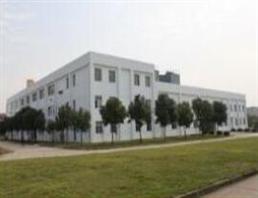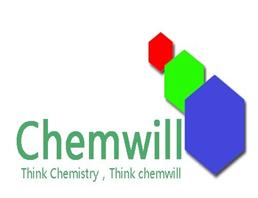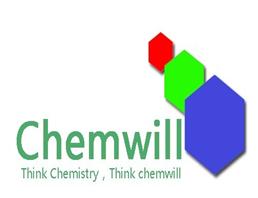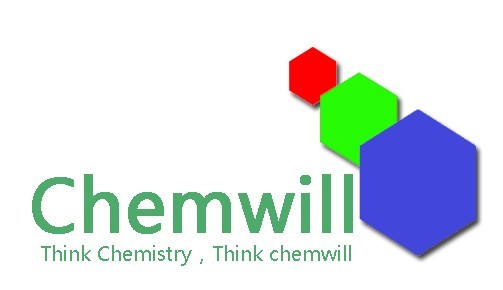
4-Dimethylaminopyridine 1122-58-3 In stock N,N-Dimethylpyridin-4-amine DMAP
| Price | $1.5 | $1.1 |
| Package | 1KG | 25KG |
| Min. Order: | 1KG |
| Supply Ability: | bulk metric tons per month |
| Update Time: | 2020-06-02 |
Product Details
| Product Name: 4-Dimethylaminopyridine 1122-58-3 In stock N,N-Dimethylpyridin-4-amine DMAP | CAS No.: 1122-58-3 |
| Min. Order: 1KG | Purity: 99.5% high quality purified in stock |
| Supply Ability: bulk metric tons per month | Release date: 2020/06/02 |
| Contact person: Ms Ella Su Manager | E-mail: chemwill_asia@126.com;chemwill@hotmail.com |
Product no. chemwill4DPE1002
4-Dimethylaminopyridine 1122-58-3 In stock N,N-Dimethylpyridin-4-amine DMAP
Product Name: 4-Dimethylaminopyridine
Synonyms: Valacyclovir EP Impurity G;4-(dimethylamino)-pyridin;4-Dimethylaminepyridine;gamma-(Dimethylamino)pyridine;N,N-Dimethyl-4-aminopyridine;n,n-dimethyl-4-pyridinamin;p-Dimethylaminopyridine;Pyridine, 4-(dimethylamino)-
CAS: 1122-58-3
MF: C7H10N2
MW: 122.17
EINECS: 214-353-5
Product Categories: Fluorescent Labels & Indicators;Nucleotides;-;Amines;Aromatics;Pyridine;Heterocycles;Pyridines, Pyrimidines, Purines and Pteredines;Pyridines derivates;Other Reagents;Biochemistry;Condensation & Active Esterification;Reagents for Oligosaccharide Synthesis;Synthetic Organic Chemistry;Materials Science;Bases & Related Reagents
Mol File: 1122-58-3.mol
4-Dimethylaminopyridine Structure
4-Dimethylaminopyridine Chemical Properties
Melting point 83-86 °C(lit.)
Boiling point 211 °C
density 0.906 g/mL at 25 °C
refractive index n20/D 1.431
Fp 110 °C
storage temp. Store in dark!
solubility methanol: 50 mg/mL, clear
form prilled
pka pKa (20°): 9.7
color off-white to yellow
PH 11 (60g/l, H2O, 20℃)
Water Solubility 76 g/L (25 ºC)
Merck 14,3389
BRN 110354
Stability: Stable. Incompatible with acids, oxidizing agents.
CAS DataBase Reference 1122-58-3(CAS DataBase Reference)
NIST Chemistry Reference 4-Pyridinamine, N,N-dimethyl-(1122-58-3)
EPA Substance Registry System 4-Pyridinamine, N,N-dimethyl-(1122-58-3)
Safety Information
Hazard Codes T,C,T+,Xn,F
Risk Statements 25-34-24/25-36/37/38-27-36-24-20-61-40-23/24/25-67-66-21/22-11-36/37-22-19
Safety Statements 36/37/39-45-28A-26-28-36/37-53-27-22-16
RIDADR UN 2811 6.1/PG 2
WGK Germany 3
RTECS US8400000
Autoignition Temperature 420 °C
Hazard Note Toxic/Corrosive
TSCA T
HazardClass 8
PackingGroup II
HS Code 29333999
Name 4-Dimethylaminopyridine
Synonyms N,N-Dimethylpyridin-4-amine; DMAP
copyRight
Molecular Structure CAS # 1122-58-3, 4-Dimethylaminopyridine, N,N-Dimethylpyridin-4-amine, DMAP
Molecular Formula C7H10N2
Molecular Weight 122.17
CAS Registry Number 1122-58-3
EINECS 214-353-5
Properties
Melting point 108-113 ºC
Boiling point 162 ºC (50 mmHg)
Flash point 110 ºC
Water solubility 76 g/L (25 ºC)
4-Dimethylaminopyridine (DMAP) is a derivative of pyridine with the chemical formula (CH3)2NC5H4N. This colourless solid is of interest because it is more basic than pyridine, owing to the resonance stabilisation from the NMe2 substituent.
Because of its basicity, DMAP is a useful nucleophilic catalyst for a variety of reactions such as esterifications with anhydrides, the Baylis-Hillman reaction, hydrosilylations, tritylation, the Steglich rearrangement, Staudinger synthesis of β-lactams and many more. Chiral DMAP analogues are used in kinetic resolution experiments of mainly secondary alcohols and Evans auxiliary type amides.
Basic Info
Chemical Name 4-Dimethylaminopyridine
Synonyms
4-Dimethylaminopyrid; AURORA KA-6495; N-(4-Pyridyl)dimethylamine; 4-Pyridinamine, N,N-dimethyl-; 4-Dimethylaminepyridine; Expand
CAS No. 1122-58-3
Molecular Formula C7H10N2
Molecular Weight 122.16800
PSA 16.13000
LogP 1.14760
Properties
Appearance & Physical State white to yellow crystalline powder
Density 1.012 g/cm3
Boiling Point 162ºC (50 mmHg)
Melting Point 108-113ºC
Flash Point 110ºC
Refractive Index n20/D 1.431
Water Solubility 76 g/L (25 ºC)
Stability Stable. Incompatible with acids, oxidizing agents.
Storage Condition Store in dark
Vapor Pressure 0.431mmHg at 25°C
Safety Info
RTECS US8400000
Hazard Class 8
Safety Statements S26-S28-S36/37/39-S45
HS Code 2933399090
WGK Germany 3
Packing Group II
RIDADR UN 1760/2811
Risk Statements R24/25; R34
Hazard Codes T
Symbol GHS06, GHS08
Hazard Declaration H302; H311; H315; H319; H335; H351
Caution Statement P280; P301 + P312 + P330; P302 + P352 + P312; P304 + P340 + P312; P305 + P351 + P338; P337 + P313
Signal Word Danger
Synthesis Route
Total 42 Documents
4-Dimethylaminopyridine Usage And Synthesis
Overview 4-Dimethylaminopyridine is highly powerful catalyst of organic synthesis. The treatment of substrates such as alcohols, phenols and amines with acetic anhydride (or acetyl chloride) in the presence of pyridine has provided a general acetylation method since the turn of the 20th century. However, this approach often proves to be unsatisfactory for the acetylation of deactivated substrates. It was not until the late 1960’s that certain 4-dialkylaminopyridines were found (independently by two research groups)[1, 2] to be much superior to pyridine as catalysts for difficult acetylations or acylations, in general.
Figure 1 the chemical structure of DMAP
4-Dialkylaminopyridines were soon found to have general applicability for catalysis of a wide variety of reactions. 4-dimethylaminopyridine’s (DMAP) wide applicability has been frequently reviewed since the first review appeared in 1978. [3] The accelerating pace of reported applications for DMAP and the availability of DMAP in commercial quantities, at modest prices, have continued to stimulate great interest in its use as a catalyst in the fields of organic, polymer, analytical and biochemistry. Today there are thousands of examples of the use of DMAP in far ranging fields of chemistry in both patents and the research literature. Many full-scale production processes utilizing DMAP have been and are being operated. Several pharmaceutical and agricultural products that rely on DMAP’s superior catalytic properties in their synthetic sequences have been produced for years. Since 1976 more than 11,000 US patents have been granted which mention DMAP or dimethylaminopyridine.
The functional groups and class of compounds that are involved in the reactions with DMAP include alcohols, amines, arenes, azides, carbenes, enols, epoxides, hydrazines, hydroxylamines, phenols, thiols, lipids, sugars, aminoacids, peptides, alkaloids, steroids, terpenes, and others. Reactions that have been published in the literature using DMAP fall into, but are not limited to, the following types of reactions: Acylation; Acetylation; Alkylation; Benzoylation; Bischler-Naperalski cyclization, Carbonylation; Carbo-diimidation; Cyclization; Dehydration; Esterificaton; Indole Synthesis; Nucleophilic Substitution; Rearrangement; Silylation; Sulfonamidation; Sulfonation; Tritylation; Formylation; Carbamoylation; Phosphorylation; Lactonization; Pivaloylation; Dakin-West Reaction; Baylis-Hillman Reaction.
Chemical Properties DMAP (m.p. 112-113°C) and PPY (m.p. 57-58°C)[4] are colorless, crystalline substances which are very soluble in methanol, ethyl acetate, chloroform, methylene chloride, 1,2-dichloroethane, acetone, and acetic acid and less soluble in cold hexane, cyclohexane, and water. DMAP can be recrystallized from ethyl acetate and PPY from pentane or hexane. The basicities of DMAP[5] and PPY in water as well as the dipole moment of DMAP[7-9] in benzene and dioxane have been determined by several groups. Of especial interest are the thermodynamic investigations concerned with the protonation of DMAP in water[11] and calculations whereby the influence of substituents on the basicity has been determined[6, 9, 10].
Uses A highly efficient catalyst for acylation reactions.
Uses 4-Dimethylaminopyridine is a versatile hypernucleophilic acylation catalyst, it is used to improve the yield, reduce the reaction time, improving relaxation process conditions. Widely used in perfumes, dyes, pigments, pesticides, pharmaceuticals and polymer compounds and other fields. Also used as a catalyst for the synthesis of polyurethane, a curing agent and a blowing catalyst.
Uses DMAP is a useful highly basic nucleophilic catalyst for a variety of reactions such as esterifications with anhydrides, the Baylis-Hillman reaction, hydrosilylations, tritylation, the Steglich rearrangement.
Uses In a wide variety of organic syntheses as a catalyst.
Uses A highly fluorescent adenosine analogue, which in a dimethoxytrityl, phosphoramidite protected form, can be site-specifically inserted into oligonucleotides through a 3?5?phosphodiester linkage using an automated DNA synthesizer
Purification Methods Recrystallise DMAP from toluene [Sadownik et al. J Am Chem Soc 108 7789 1986]. [Beilstein 22 V 112.] § A polystyrene supported version (PS-DMAP) is commercially available.
4-Dimethylaminopyridine Preparation Products And Raw materials
Preparation Products BETA-(4-ACETOXYPHENYL)PROPIONIC ACID-->2-Chloro-4-(trifluoromethyl)pyrimidine-->1-[4-(TRIFLUOROMETHYL)PYRIMID-2-YL]PIPERAZINE-->1-METHYL-3-(TRIFLUOROMETHYL)-1H-PYRAZOLE-->N4-Benzoylcytosine-->3-Hydrazinyl-1-(4-methylpiperazin-1-yl)propan-1-one -->4-BROMO-5-(TRIFLUOROMETHYL)-1-PHENYL-1H-PYRAZOLE-->2-ACETAMIDOPYRIDINE-3-CARBOXYLIC ACID-->3-Hydrazinyl-1-morpholinopropan-1-one -->2-Hydrazinyl-1-(4-methylpiperazin-1-yl)ethanone -->1-TERT-BUTYL-4-BROMO-3-(TRIFLUOROMETHYL)-1H-PYRAZOLE-->2-Hydrazinyl-1-morpholinoethanone -->1-(2-PYRROLIDINOETHYL)PIPERAZINE-->4-BROMO-1-METHYL-3-(TRIFLUOROMETHYL)-1H-PYRAZOLE-->2-AMINO-ISONICOTINIC ACID ETHYL ESTER-->1-TERT-BUTYL-4-BROMO-5-(TRIFLUOROMETHYL)-1H-PYRAZOLE-->5-(TRIFLUOROMETHYL)-1-METHYL-1H-PYRAZOLE-4-CARBALDEHYDE-->4-TRIFLUOROMETHYL-N-METHYLANILINE 97-->Aniracetam-->Docetaxel-->(2R)-(-)-Glycidyl tosylate-->METHYL 6-[(TERT-BUTOXYCARBONYL)AMINO]NICOTINATE-->2-Hydroxy-4-(trifluoromethyl)pyrimidine-->TERT-BUTYL 5-FORMYLTHIAZOL-2-YLCARBAMATE-->1-TERT-BUTYL-5-(TRIFLUOROMETHYL)-1H-PYRAZOLE-4-CARBALDEHYDE-->4-BROMO-5-(TRIFLUOROMETHYL)-1-METHYL-1H-PYRAZOLE-->1-ACETYL-5-BROMOINDOLINE-->4-AMINOBENZANILIDE-->2-(METHYLTHIO)-4-(TRIFLUOROMETHYL)PYRIMIDINE-->Boc-L-beta-Homoproline-->1-TERT-BUTYL-3-(TRIFLUOROMETHYL)-1H-PYRAZOLE-->2'-BROMOACETANILIDE-->1-TERT-BUTYL-5-(TRIFLUOROMETHYL)-1H-PYRAZOLE-->2-Aminoisonicotinic acid -->2,2,2-TRIFLUORO-1-(3-(TRIFLUOROMETHYL)-1-PHENYL-1H-PYRAZOL-4-YL)ETHANONE-->5-(TRIFLUOROMETHYL)-1-METHYL-1H-PYRAZOLE-->LIMAPROST-->PIPERAZINE-1,4-DICARBOXYLIC ACID TERT-BUTYL ESTER METHYL ESTER-->MONO-METHYL SUCCINATE
Raw materials Azabenzene-->Hexamethylphosphoramide-->4-Hydroxypyridine
Company Profile Introduction
You may like
-
CAS:61489-71-2
$1.50 / 1KG
-
CAS:1122-58-3
$1.50 / 1KG
Recommended supplier
| Product name | Price | Suppliers | Update time | |
|---|---|---|---|---|
| $10.00/1KG |
VIP6Y
|
Hebei Weibang Biotechnology Co., Ltd
|
2024-11-06 | |
| $28.00/1000kg |
VIP1Y
|
Yujiang Chemical (Shandong) Co.,Ltd.
|
2024-10-24 | |
| $3.50/1kg |
VIP1Y
|
Hebei Andu Technology Com.,Ltd
|
2024-08-25 | |
| $500.00/1kg |
VIP1Y
|
HEBEI SHENGSUAN CHEMICAL INDUSTRY CO.,LTD
|
2024-08-23 | |
| $10.70/1KG |
VIP4Y
|
Hebei Chuanghai Biotechnology Co,.LTD
|
2024-08-21 | |
| $0.00/1kg |
VIP1Y
|
Watson Biotechnology Co.,Ltd
|
2024-08-02 | |
| $0.00/1kg |
VIP2Y
|
Hebei Kingfiner Technology Development Co.Ltd
|
2024-06-19 | |
| $0.00/25KG |
VIP5Y
|
Hebei Mujin Biotechnology Co.,Ltd
|
2024-05-14 | |
| $0.00/25kg |
VIP1Y
|
Hebei Mojin Biotechnology Co.,Ltd
|
2024-05-09 | |
| $99.00/1kg |
VIP1Y
|
Hebei Zhuanglai Chemical Trading Co.,Ltd
|
2024-05-08 |
- Since: 2004-09-01
- Address: BLDG 9,No.235 Sanlin road,Pudong new district,Shanghai,China






 China
China